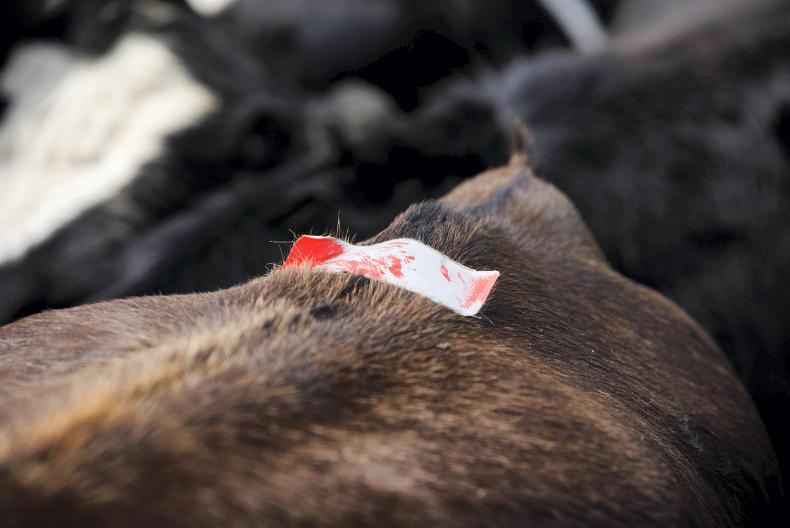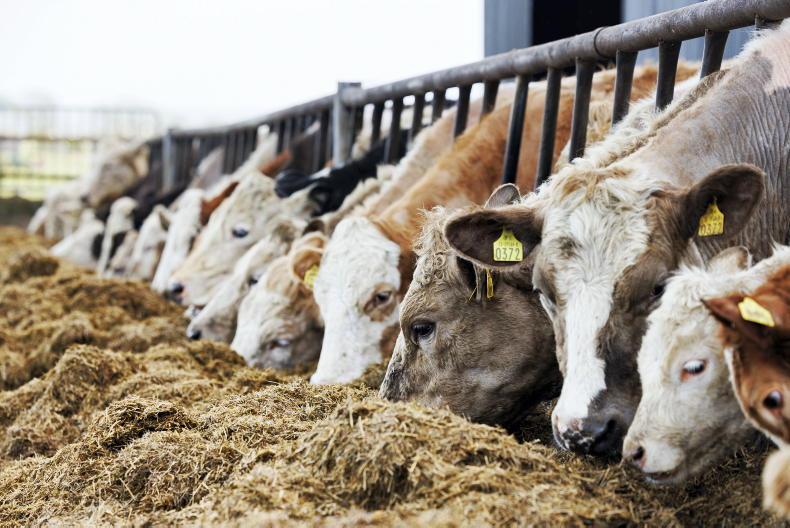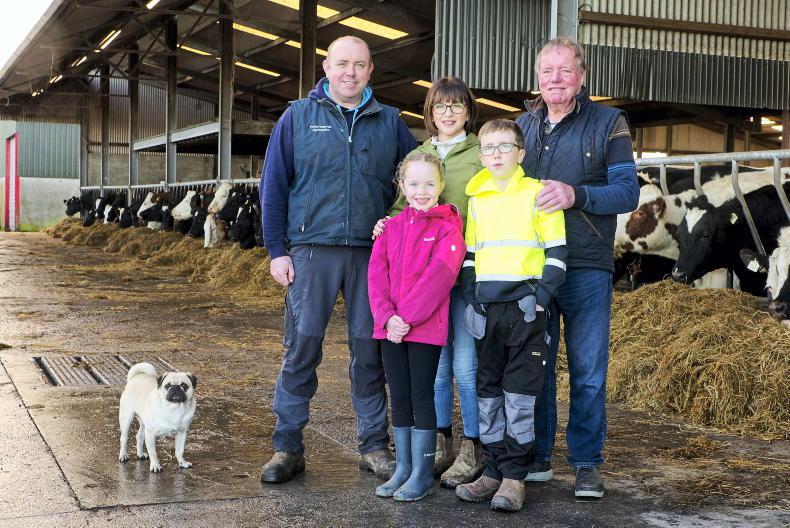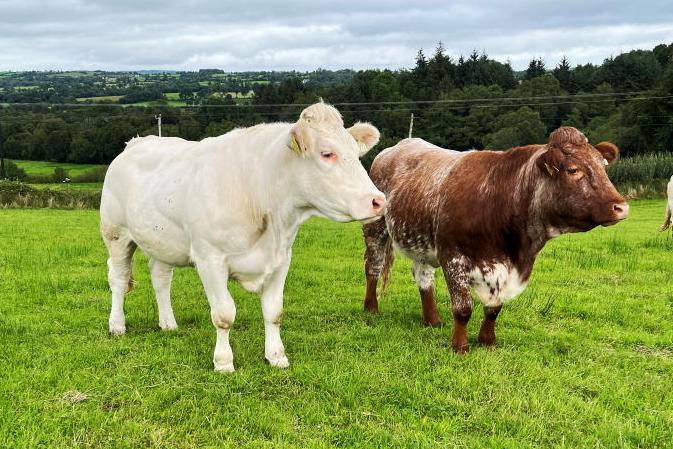Interest in synchrony programmes on dairy stock has increased dramatically over the last few years.
Increased herd size and a shortage of labour means that many farmers have decided to use hormones to bypass heat detection as a means of achieving high submission rates in both heifers and cows.
There are two ways of looking at a synchrony programme: on the one hand, they can be used to treat problem cows as a means of improving their chances of going back in-calf earlier in the season.
On the other hand, they can be used on healthy animals to short-cycle or time their natural heats to a fixed time.
Fixed-time AI programmes have particular relevance for those looking to use sexed semen, either in dairy cows or replacement heifers, as the timing of AI is more critical compared to conventional AI.
In my view, relying heavily on hormonal programmes to get healthy cows in-calf isn’t good practice in the long term, so this is something that farmers need to watch out for.
Risks
The risks as I see it are that over many generations, replacements will be selected from animals that get pregnant through synthetic hormones rather than naturally producing hormones and we could be unwittingly breeding cows with lower natural fertility.
Having said that, I do think there is a place for synchrony programmes, particularly in problem cows and with heifers who can be hard to detect in heat.
Prostaglandin (PG)-based programmes can be used in cows and heifers to bring on the onset of heat in healthy animals. This means that the heifers or cows must be cycling in order for the PG to have an effect.
The most common use of PG is with heifers, whereby farmers will monitor the heifers for heat for seven days and then inject any heifer not served with PG.
All going well, one-third of the heifers should have been mated in the first seven days and the majority of the rest should come into heat two to five days after getting the shot of PG.
A relatively small number of heifers (10%) won’t have come into heat even after getting the shot of PG and the option with these animals is to give them another shot 11 days after getting the first shot.

Heifers with scratch cards applied for heat detection. \ Donal O'Leary
Stephen Moore from Teagasc recommends inseminating these heifers 72 hours and 96 hours after getting the second shot of PG even if they are not showing obvious signs of heat because he says they could still have ovulated.
However, most farmers will just run the heifers with a bull or bulls after the vast majority of the heifers have been inseminated.
Prostaglandin can also be used on milking cows that are cycling. Some farmers use it to condense heats into the first week of breeding using a programme called Why-Wait.
This involves giving up to two-thirds of the cows in the herd a shot of PG to coincide their heats with the other one-third of the herd due to come naturally that week.
If the timing of the injection is right, cows will come into heat two to five days after getting the PG and they should then be served.
Progesterone-based hormone devices are used for fixed-time AI programmes.
These are more complex and costly when compared to a PG programme but the main advantage of them is that no heat observation is required and, particularly with heifers, they only have to be handled four times for 100% of the heifers to be served on the first day of the breeding season.
The programme, as outlined in Figure 1, is recommended by Teagasc.
This programme is similar to the one for cows, but with important differences.
According to Stephen Moore, sticking with the correct protocol and following it exactly is absolutely critical for a good outcome.
The main difference is that the progesterone device stays in heifers for six days, whereas it stays in cows for eight days.
Two shots of prostaglandin are used in the programme, which is said to increase conception rates by up to 10%.
A shot of GnRH is given at the same time as the AI, 48 hours after the second shot of PG.
For cows, the protocol outlined in Figure 2 is a 10-day fixed-time AI programme.
Stephen says this programme is suitable for use on problem cows or cows that are to be synchronised for sexed semen at the start of the breeding season, etc, but only cows that are calved at least 40 days should be enrolled in the programme, meaning they will be at least 50 days calved before being served.
Injections
He says that timing of the injections and timing of the AI is important and that the times in the examples used in Figures 1 and 2 should be adjusted based on the time the animals are to be inseminated. This is particularly relevant as it can often suit an AI technician to do synchronised heifers in the afternoon.
There are a couple of trade-offs when it comes to synchronisation programmes.
The main ones are costs of the programme and the impact on conception rates of using a synchronisation programme.
Speaking on a recent Teagasc webinar, Stephen Moore said that if the protocol is followed correctly, there should be no deviation from normal on-farm conception rates when using fixed-time AI compared to using AI after a normal, observed heat.
However, it is fair to say that there are differing levels of success at farm level, so this needs to be considered and weighed up.
Interest in synchrony programmes on dairy stock has increased dramatically over the last few years.
Increased herd size and a shortage of labour means that many farmers have decided to use hormones to bypass heat detection as a means of achieving high submission rates in both heifers and cows.
There are two ways of looking at a synchrony programme: on the one hand, they can be used to treat problem cows as a means of improving their chances of going back in-calf earlier in the season.
On the other hand, they can be used on healthy animals to short-cycle or time their natural heats to a fixed time.
Fixed-time AI programmes have particular relevance for those looking to use sexed semen, either in dairy cows or replacement heifers, as the timing of AI is more critical compared to conventional AI.
In my view, relying heavily on hormonal programmes to get healthy cows in-calf isn’t good practice in the long term, so this is something that farmers need to watch out for.
Risks
The risks as I see it are that over many generations, replacements will be selected from animals that get pregnant through synthetic hormones rather than naturally producing hormones and we could be unwittingly breeding cows with lower natural fertility.
Having said that, I do think there is a place for synchrony programmes, particularly in problem cows and with heifers who can be hard to detect in heat.
Prostaglandin (PG)-based programmes can be used in cows and heifers to bring on the onset of heat in healthy animals. This means that the heifers or cows must be cycling in order for the PG to have an effect.
The most common use of PG is with heifers, whereby farmers will monitor the heifers for heat for seven days and then inject any heifer not served with PG.
All going well, one-third of the heifers should have been mated in the first seven days and the majority of the rest should come into heat two to five days after getting the shot of PG.
A relatively small number of heifers (10%) won’t have come into heat even after getting the shot of PG and the option with these animals is to give them another shot 11 days after getting the first shot.

Heifers with scratch cards applied for heat detection. \ Donal O'Leary
Stephen Moore from Teagasc recommends inseminating these heifers 72 hours and 96 hours after getting the second shot of PG even if they are not showing obvious signs of heat because he says they could still have ovulated.
However, most farmers will just run the heifers with a bull or bulls after the vast majority of the heifers have been inseminated.
Prostaglandin can also be used on milking cows that are cycling. Some farmers use it to condense heats into the first week of breeding using a programme called Why-Wait.
This involves giving up to two-thirds of the cows in the herd a shot of PG to coincide their heats with the other one-third of the herd due to come naturally that week.
If the timing of the injection is right, cows will come into heat two to five days after getting the PG and they should then be served.
Progesterone-based hormone devices are used for fixed-time AI programmes.
These are more complex and costly when compared to a PG programme but the main advantage of them is that no heat observation is required and, particularly with heifers, they only have to be handled four times for 100% of the heifers to be served on the first day of the breeding season.
The programme, as outlined in Figure 1, is recommended by Teagasc.
This programme is similar to the one for cows, but with important differences.
According to Stephen Moore, sticking with the correct protocol and following it exactly is absolutely critical for a good outcome.
The main difference is that the progesterone device stays in heifers for six days, whereas it stays in cows for eight days.
Two shots of prostaglandin are used in the programme, which is said to increase conception rates by up to 10%.
A shot of GnRH is given at the same time as the AI, 48 hours after the second shot of PG.
For cows, the protocol outlined in Figure 2 is a 10-day fixed-time AI programme.
Stephen says this programme is suitable for use on problem cows or cows that are to be synchronised for sexed semen at the start of the breeding season, etc, but only cows that are calved at least 40 days should be enrolled in the programme, meaning they will be at least 50 days calved before being served.
Injections
He says that timing of the injections and timing of the AI is important and that the times in the examples used in Figures 1 and 2 should be adjusted based on the time the animals are to be inseminated. This is particularly relevant as it can often suit an AI technician to do synchronised heifers in the afternoon.
There are a couple of trade-offs when it comes to synchronisation programmes.
The main ones are costs of the programme and the impact on conception rates of using a synchronisation programme.
Speaking on a recent Teagasc webinar, Stephen Moore said that if the protocol is followed correctly, there should be no deviation from normal on-farm conception rates when using fixed-time AI compared to using AI after a normal, observed heat.
However, it is fair to say that there are differing levels of success at farm level, so this needs to be considered and weighed up.











SHARING OPTIONS